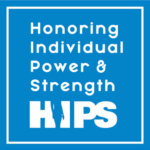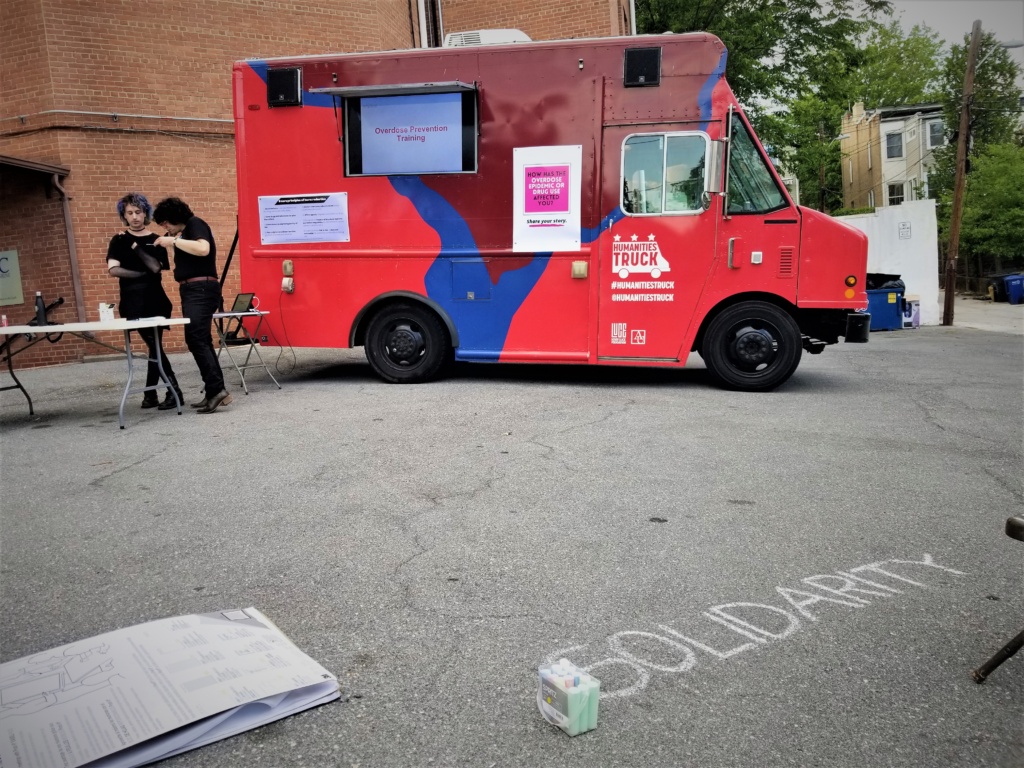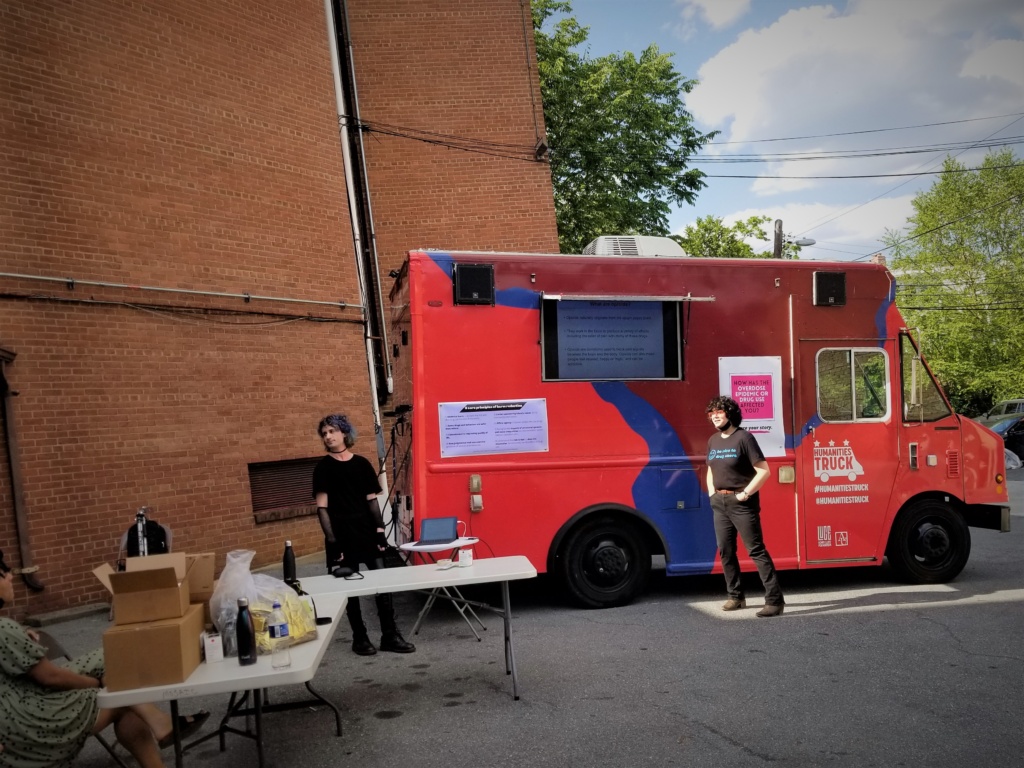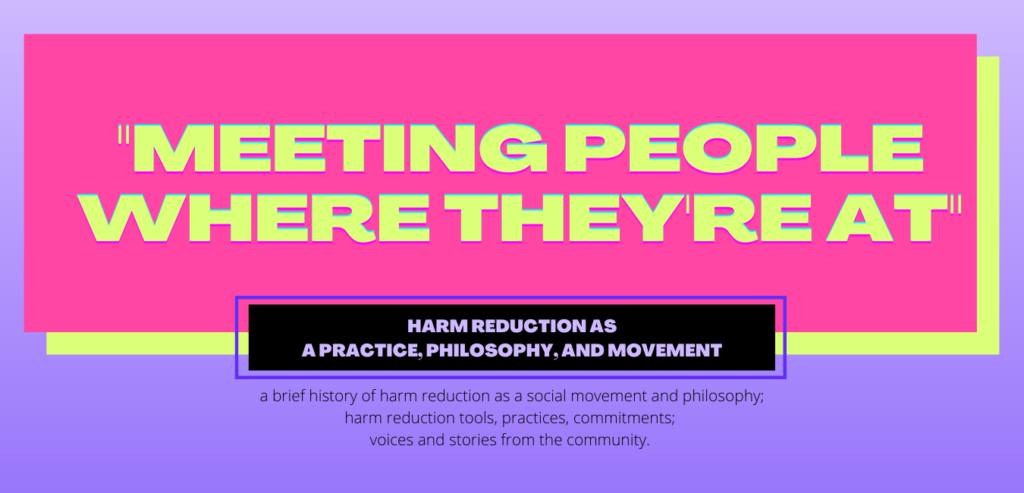Introducing HIPS
 We’re pleased to announce that we have been and will be collaborating with HIPS this summer. Together we will be mobilizing collaborative community dialogue and events about drug-related harm reduction. HIPS is a local harm reduction organization that provides services, resources, advocacy, education, and training to, with, and by sex workers, LGBTQ+ folks, and people who use drugs. We’re thrilled to join efforts.
We’re pleased to announce that we have been and will be collaborating with HIPS this summer. Together we will be mobilizing collaborative community dialogue and events about drug-related harm reduction. HIPS is a local harm reduction organization that provides services, resources, advocacy, education, and training to, with, and by sex workers, LGBTQ+ folks, and people who use drugs. We’re thrilled to join efforts.
Formed in 1993 by community representatives, HIPS (Honoring Individual Power & Strength) initially mobilized around youth sex worker outreach and counseling in Washington, D.C. They have since expanded programming to address the following: HIV/AIDS education, testing, and resources; peer education programming; drug use safety, education, and substance use treatment; overdose prevention services; syringe exchange; programs specifically for LGBT+ sex workers and safety; counseling; educational and training services; housing services; virtual medical appointments; and more. In addition to providing these vital resources, services, and training in the District, HIPS is active in policy and advocacy.
Wait — what is harm reduction?
Harm reduction is a practice, philosophy, and a social movement. These practices, philosophies, communities, advocacy, and resources aim to create a just and fair world for people who use drugs, to destigmatize them, and to create a compassionate and nonpunitive world that “meets people where they’re at”, that amplifies individual’s personal autonomy, that’s grounded in care rather than punishment or violent views of morality and criminality. It’s rooted in activism, social justice, and it’s for the communities they serve, by the communities they serve. It’s far more than just a substance use disorder medication program or syringe exchange. Harm reduction includes a variety of strategies, practices, and care in many forms (since drug use is complex and always effects individuals and communities differently).
Here are the 8 core principles to the movement and spectrum of strategies:
- Minimize harm: Accepts that licit an illicit drug use is a part of this world.
- Some drugs and behaviors are safer than others
- Drug use is a complex and multi-faceted phenomenon.
- Commitment to improving quality of life
- Whatever that looks like! May not be cessation of drug use, nor does it have to be.
- Non-Judgmental and non-coercive provision of services and resources
- Centers community/client’s voices; led by community/client voices
- People with lived experience have a voice in creating programs and policies
- Affirms agency; Empowers people who use drugs
- People who use drugs (PWUD) are primary agents of their lives
- Recognizes the impacts of structural systems and social inequalities
- Discrimination, racism, classism, capitalism, etc. exacerbate harm cause by substance use
- Risk is real
- Does not minimalize the potentially harmful effects of drug use; takes a realistic approach to reduce harm and danger.
Harm reduction is liberatory accountability public health compassionate justice non-judgmental
Community Collaborations
On May 15th, 2021 the Humanities Truck, HIPS, and Ward Four Mutual Aid teamed up for our first event — we provided free meals, opioid and drug education, and opioid overdose prevention training at Mosaic Church of the Nazarene where supplies are distributed weekly by Ward Four Mutual Aid. Shortnee Street Eatz catered and provided a delicious array of food that left many people with full, satisfied bellies. Leftovers were greatly appreciated by those who were able to take some with them. In addition to training, free food, and great conversations we will also be gathering testimonials and interviews from people with lived experiences with drug use to explore harm reduction as a movement, philosophy, and practice at future events.
Once we settled down with our food and chatted amongst the music from the external truck speakers, HIPS led the conversation, drug education, and overdose prevention training and then passed out safer sex supplies and opioid overdose reversal kits. Meanwhile, the truck set up a craft station and provided the training’s backdrop. Since HIPS is a harm reduction organization it follows that their drug education embodies that philosophy rather than a strictly abstinence based, moral, or punitive model. They emphasized that drug use exists on a spectrum —drugs and use affect every person differently. The role and goal of harm reduction isn’t to fearmonger about the dangers of drugs or judge people for their drug consumption or lifestyle. Harm reduction’s purpose, as shown via the training, is to educate about some risks affiliated with drug use, accept (rather than deny or punish) that drug use exists and will continue to exist, and to entirely center on how to reduce harm. This reduction of harm can take many forms like testing personal drug supplies, challenging racist drug-policies, or carrying and/or using naloxone.
The training had many attendees who were fixated on and engaged with the training. We addressed opioid use specific to the district, the core principles and some myths about harm reduction, and how to reverse opioid overdoses. Several people sparked great conversations and asked clarifying questions. At one moment, a man had a lightbulb moment about harm reduction when he acknowledged that it isn’t about enabling drug use, but about learning ways to navigate the risks and reducing the harms affiliated with drugs. The idea that harm reduction enables drug use is a common misconception, but the man participating in the training saw through it and saw it as a safety measure instead.
This was HIPS’ first time back to in-person training since the pandemic shut down public gatherings. The resilient and adaptable outreach and programming teams adjusted to these conditions by doing many virtual trainings. Gathering in-person outside for this event was welcome and refreshing. It was particularly important since not all people have access to video conferencing software or the internet. This was particularly evident during the pandemic that shut down several public resources like libraries and many forms of life moved online.
We will continue with outreach, conversations, free meals and training in July and August in different wards and host a larger event on Opioid Overdose Awareness Day August 31, 2021. Keep an eye out for more details!
Visit our new web exhibit by clicking the image below for more on the history of harm reduction, brief info on the medicalization of harmful substance use, substance use disorder medicines, the drug war, and decriminalization! More interviews, reflections, and info will be intermittently added to the site as we see fit and continue our community collaborations.
Quick harm reduction drug use tips:
- Don’t use alone
- Avoid mixing drugs
- Go slow
- Carry naloxone (opioid overdose reversal drug) for you or others, and test your supply.
Harm reduction practices, tools, and philosophies are for everyone and exist beyond the boundaries of drug use or sex work. Anyone can employ harm reduction tactics and mentalities into their own lives. A common example is deciding to use a seat belt — driving a car comes with risk and seatbelts are a harm reduction strategy.
Seeking information on safer drug consumption? Check out this fact sheet by the National Harm Reduction Coalition, this list compiled by HIPS, or call the HIPS 24 hour hotline 1 (800) 676-4477.
The Author
Laura is pursuing their MA in Public Anthropology and is currently studying how power, policy, and ideology shape the lives of people who use drugs in the U.S.






